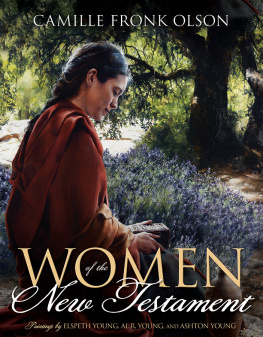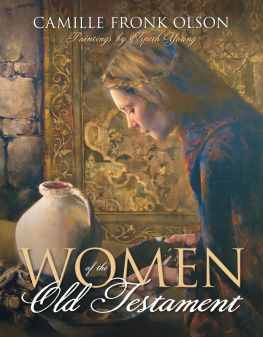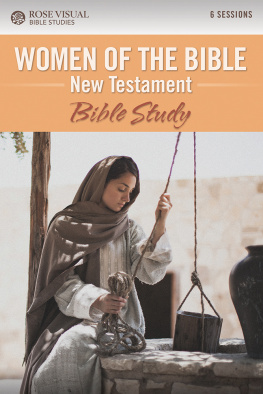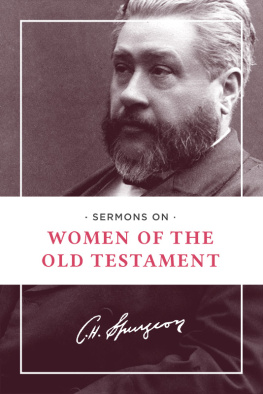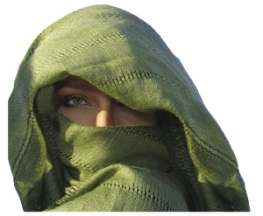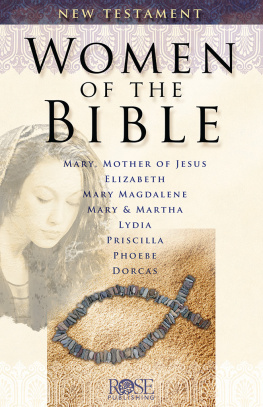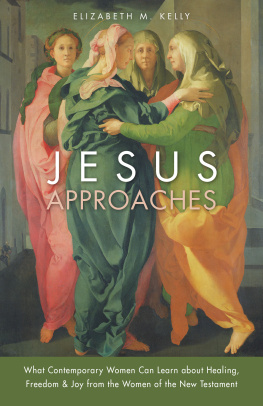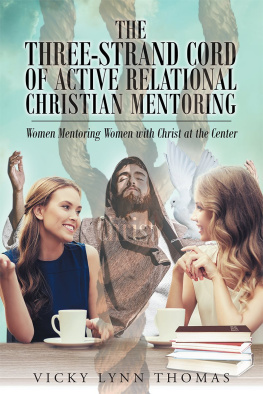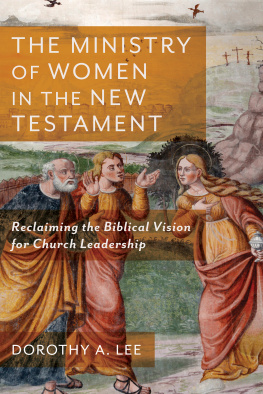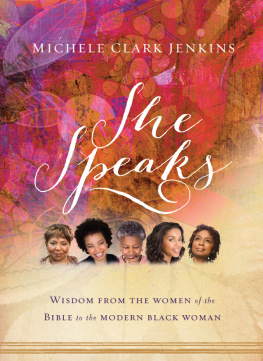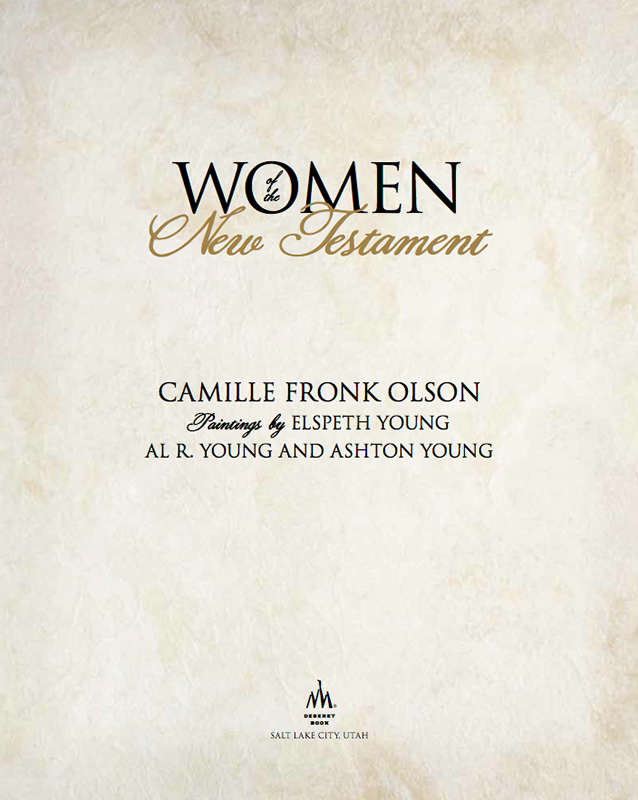2014 Camille Fronk Olson.
All rights reserved. No part of this book may be reproduced in any form or by any means without permission in writing from the publisher, Deseret Book Company (permissions@deseretbook.com), P.O. Box 30178, Salt Lake City Utah 84130. This work is not an official publication of The Church of Jesus Christ of Latter-day Saints. The views expressed herein are the responsibility of the author and do not necessarily represent the position of the Church or of Deseret Book. Deseret Book is a registered trademark of Deseret Book Company.
Library of Congress Cataloging-in-Publication Data
Olson, Camille Fronk, author.
Women of the New Testament / Camille Fronk Olson ; paintings by Elspeth Young, Al R. Young, and Ashton Young.
pages cm
Includes bibliographical references and index.
ISBN 978-1-60907-918-5 (hardbound : alk. paper)
1. Bible. New TestamentBiography. 2. Women in the BibleBiography. 3. Women in ChristianityHistoryEarly church, ca. 30600. I. Young, Elspeth C., illustrator. II. Young, Al R., illustrator. III. Young, Ashton, illustrator. IV. Title.
BS2445.O47 2014
225.9'22082dc232014006629
Printed in China
Global Interprint, Inc., Shenzhen, China
10 9 8 7 6 5 4 3 2 1
For Emily and Dave
Also by Camille Fronk Olson
Women of the Old Testament
Mary, the Mother of Jesus
In the Hands of the Potter
Mary, Martha, and Me
Too Much to Carry Alone
Acknowledgments

I thank the many people who assisted and inspired me in the production of this book. It was the numerous classes of students in my Women in the Scriptures courses both at Brigham Young University and earlier at the Institute of Religion near the University of Utah that first assisted me to organize my thoughts and identify the questions associated with a study on biblical women. A BYU graduate, Letty Preston Goering, maintained an interest in the subject eight years after the class and volunteered to edit and organize the manuscript in a brilliant way that made me a better writer.
I am indebted to BYU colleagues who shared their expertise in ancient history, sources, language, and archaeology as well as insights into the stories and questions I posed. The generous assistance I received from Lincoln Blumell, Matt Grey, Shon Hopkin, Eric Huntsman, Kerry Muhlestein, Kelly Ogden, Don Parry, Stephen Robinson, Gaye Strathearn, Stephen Ricks, and Thom Wayment was invaluable and clearly led to a better manuscript. I am grateful to my former department chair, Dennis Largey; former and current deans, Terry Ball and Brent Top, respectively; and mentor, Robert Millet, for their long-time encouragement and support in making available resources to do the research necessary for the book. Student assistants at BYUMatthew Merrill, Jenna King Cannon, Emma Watkins, Ben Berlin, Corbin Jacobs, Kindal McGill, Kimberly Sowards, Helena Steinacker, and Ashley Thompsonmade their mark on this project by hours of source finding, source checking, and formatting. Jeanine Ehat, department secretary for Ancient Scripture, has served me well as an editor, assistant, and friend. Colleagues Kent P. Jackson, Richard Neitzel Holzapfel, David Whitchurch, and George Pierce freely contributed photographs and commissioned artwork that represent years of experience in the Holy Land.
An essential component of this book, as of its companion volume, Women of the Old Testament, is the original artwork that Al Young and his daughter Elspeth and son Ashton created. Tanner, the youngest of Al and Nancys three children, created the maps for this book. Working with the Young family has been a constant blessing and inspiration for this project from its inception. Their devotion to the Savior and his gospel is recognized through their work.
Working with Deseret Book has again been a privilege. My deepest thanks to Sheri Dew and Jana Erickson, who believed in this project from the beginning and found ways to make it manageable; to Suzanne Brady, for her astute editing eye; and to designer Shauna Gibby and typographer Malina Grigg for making the final product visually engaging.
Without question, my greatest support and cheerleader is my husband, Paul, who read and critiqued the first drafts of each chapter and ate meager meals without complaint while I worked. I have dedicated this volume to his children (our children), Emily and Dave, for their exemplary, Christlike acceptance of me since I joined the family. They demonstrate what was vital in the early Christian church and is still essential today if we would be one with the Savior and our Father (John 17:21), regardless of how we finally come to the place of belief.
Maps
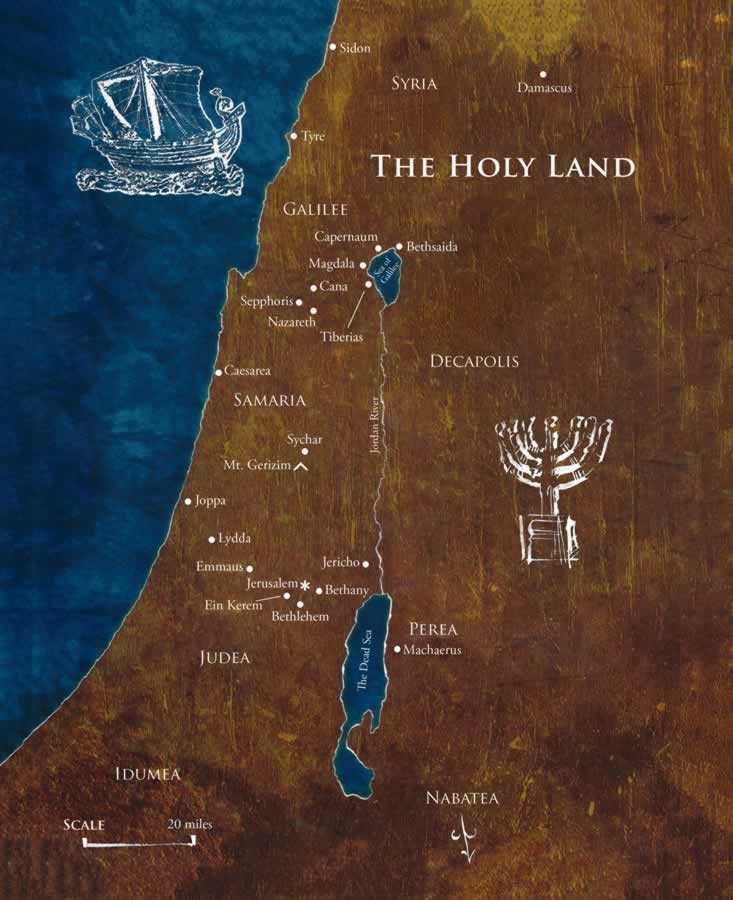
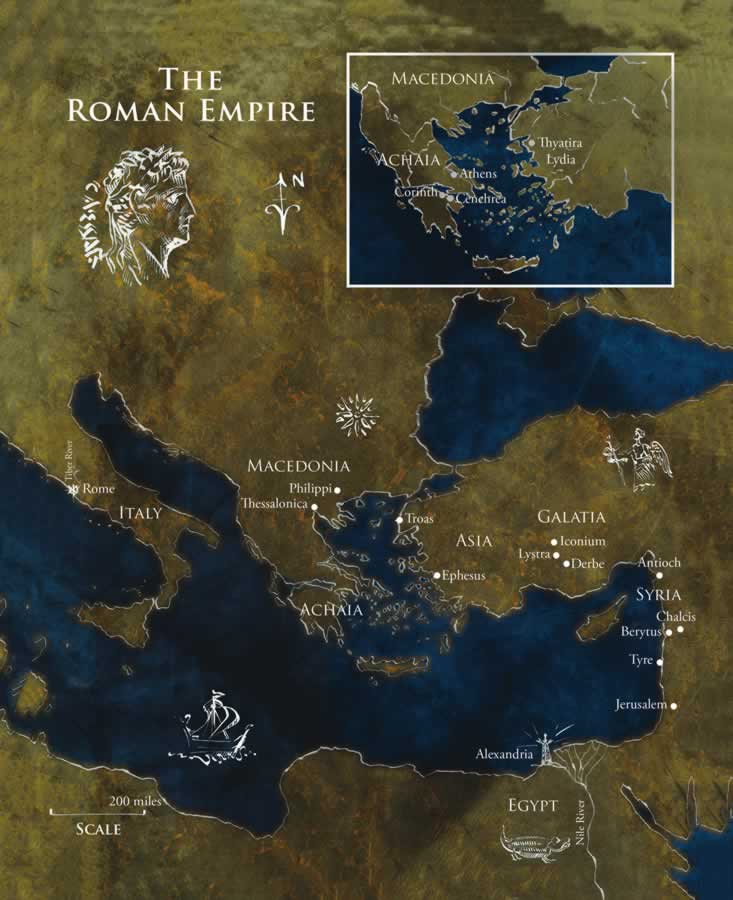
Introduction

More than fifty specific women are introduced in the New Testament with multitudes of others numbered in the crowds. By examining clues in the scriptural text and hints from ancient primary sources, my intent is to provide historical and cultural context to illuminate these womens lives. I hope to create a fuller picture of what it would have been like to be a female disciple of Christ in the first century. In the process, my wish is to invite you, the reader, to know Christ better by exploring his example and teachings through the eyes of the women of the New Testament. This unique perspective writes women back into history. It provides a glimpse from a different angle into the ancient world, hopefully to inspire readers toward a deeper reverence for the gift of the Savior and a greater commitment to serve him.
The historical context for women of the New Testament comes from the first-century Roman empire in which they lived. Collectively, they represent many different ethnic, social, and economic backgrounds. Although many came from religious traditions of idol worshipping in Greco-Roman societies where Jews were a minority, most of these women first encountered Christianity as Jews. They made their homes in and around Jerusalem, Galilee, and among Gentiles in cities where a synagogue was established.
Female disciples of Jesus Christ are frequently described in the New Testament as devout believers who eagerly served and sacrificed to follow him. Some, like Phebe and Prisca, were co-workers with the apostle Paul in his efforts to proclaim truth and spread the gospel. Others were key witnesses to Jesus role as the Son of God. Mary, Elisabeth, and Anna all bore powerful witness of him both before and after he was born. In Johns record, the Savior first confirmed to an unnamed woman in Samaria that he was the Christ, and he declared that he was the resurrection and the life to another woman, Martha, shortly before he died on the cross. In a unique way, Marthas sister, Mary, accepted the Saviors need to give his life and so anointed him in preparation for his death while other disciples attempted to prevent it. And in the crowning moment of his ministry, the Redeemer showed himself as the firstfruits of the resurrection to Mary Magdalene before anyone else. In turn, each of these women then bore her witness of truth to men. Consistently, the New Testament portrays women as abundantly capable of understanding doctrine, receiving revelation through the Spirit, and nurturing testimony in others.

